The best SSDs for workstations

Welcome to our guide to the best SSDs you can buy for your workstation. Digital creatives have big data needs, especially if you're working in a resource-hungry field like 3D modelling or video editing. You'll quickly learn that a fast SSD isn't just useful, but downright essential.
The older, slower SATA SSDs are slowly disappearing in favour of NVMe SSDs, which are many-times faster and don’t require any messy cabling as they fit directly into M.2 slots available on modern motherboards. We’re also at a generational crossover point with NVMe, since drives are starting to appear on the market that are based on the faster PCIe 5.0 standard, and can offer users beyond a blazing 14 GB/s of sequential read and write speeds.
We’ve tested seven NVMe SSDs, including four of the most popular PCIe 4.0 options, along with three brand new PCIe 5.0 SSDs that are pushing storage performance to its limits. This array of SSDs was put through its paces with a Gigabyte Aorus Elite X WiFi 7 motherboard, which has a PCIe 5.0 M.2 slot at the top. For external options, check out our guide to the best SSDs for PS5.
The best SSDs for workstations in 2025
Why you can trust Creative Bloq
Best overall
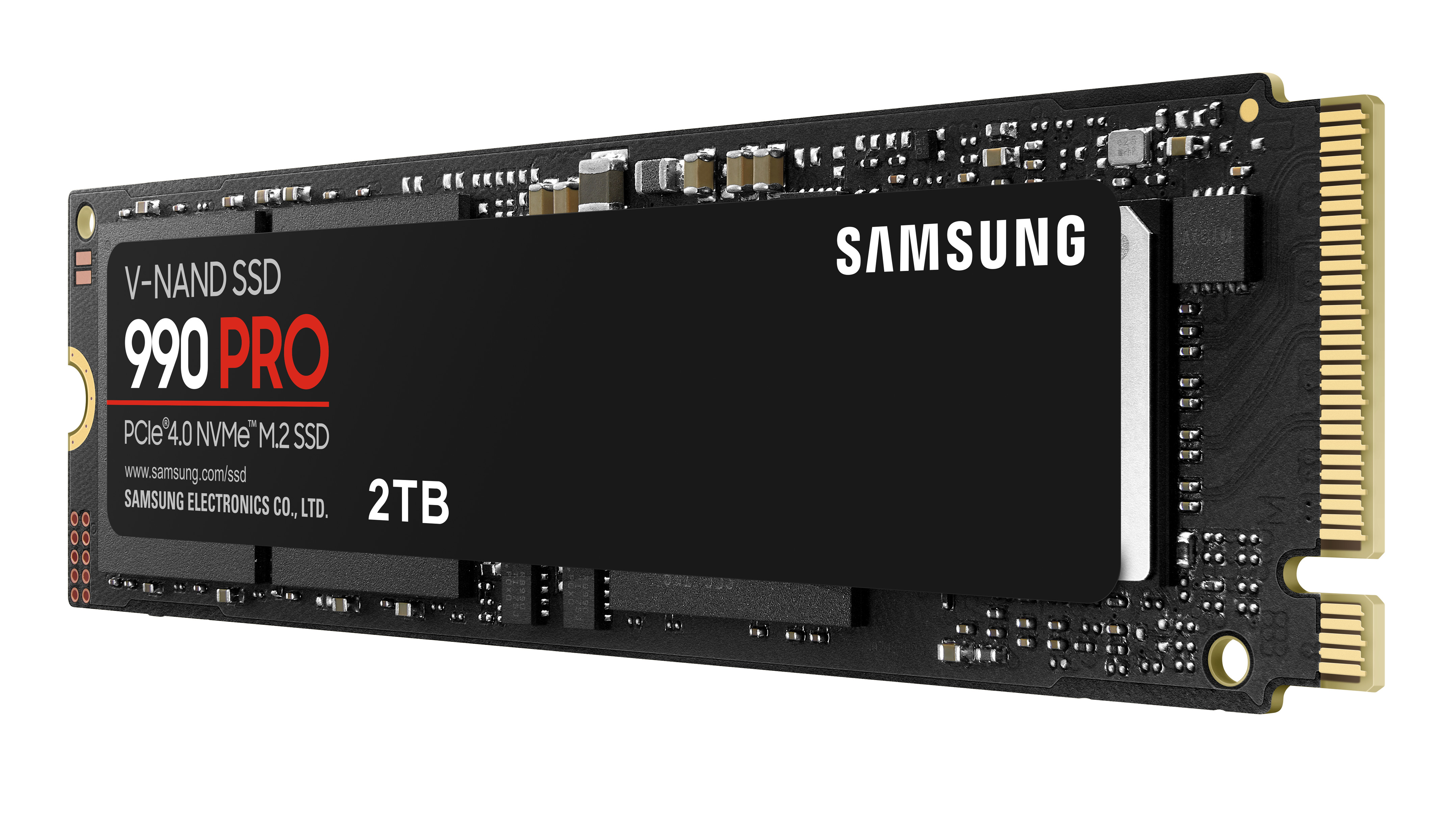
1. Samsung 990 Pro
Our expert review:
Specifications
Reasons to buy
Reasons to avoid
Samsung is the global leader in NAND flash, and has a record of pushing out brilliant SSDs with top-end performance. The 990 Pro continues that trend as the best performing PCIe 4.0 NVMe drive right now.
It uses a Samsung-designed Pascal controller, built on an 8nm process as opposed to the various 12nm controllers currently used in many other SSDs. And it’s using the latest V8 Samsung-designed TLC 3D flash. This combination means it offers the highest advertised specifi cation, with 7,450 MB/s read and 6,900 MB/s write sequential speeds, 1.6 million random 4K read and 1.5 million write IOPS. Plus, if you need it, the 990 Pro offers TCG Opal hardware encryption, which is something you won’t find on every SSD.
On top of this there’s also Samsung’s Magician software, which is hands-down the best software tool for low-level tasks such as checking a drive’s health or secure erasing a drive. Notably, the Samsung 990 Pro has a relatively lower-rated endurance across all capacities; just 2,400 TBW for the 4TB model. Sold either with or without a snazzy heatsink, we found the 990 Pro definitely benefi ts from one. Our 2TB test model reached some relatively high temperatures when being pushed to its limit for sustained periods of time, which is worth taking into consideration.
On the performance front meanwhile, our testing showed performance just slightly under Samsung’s claims, reaching 7,140 MB/s sequential read speeds and IOPS roughly 10 per cent lower than advertised. But amazingly, even then the 990 Pro was still faster than any PCIe 4.0 competitor, with IOPS that almost match the PCIe 5.0 SSDs. In particular, it achieved the highest PCMark 10 score and the lowest latency (36ms) of all PCIe 4.0 drives tested.
So despite those lower endurance figures, the 990 Pro remains our top choice for a PCIe 4.0 SSD if you’re aiming only for high performance, regardless of the cost. While it’s defi nitely not the most affordable SSD on the market, if you shop around a little there should still be some great deals to be found.
Best PCIe 5.0 drive
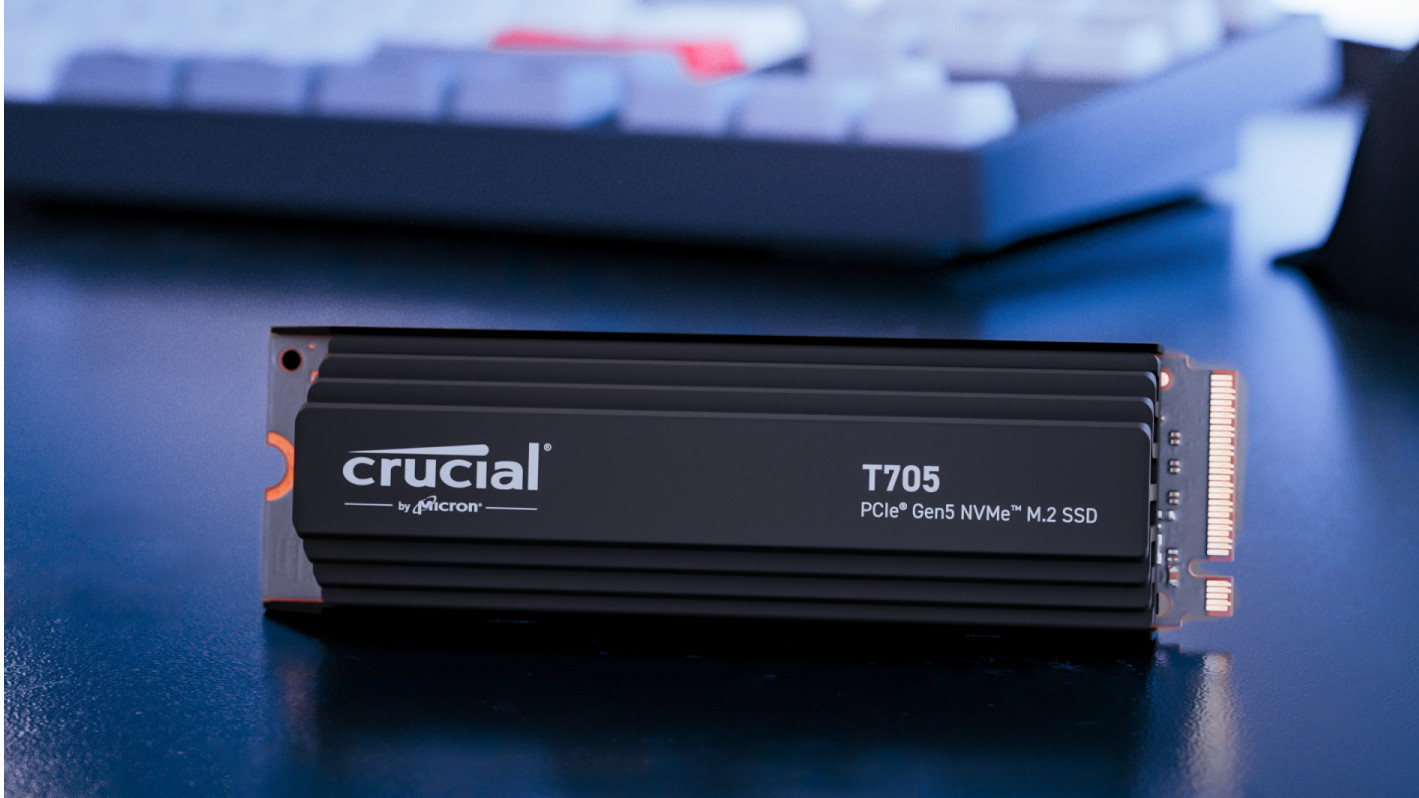
2. Crucial T705
Our expert review:
Specifications
Reasons to buy
Reasons to avoid
The rival high-end Crucial T705 and Corsair MP700 Pro SE (featured below) PCIe 5.0 SSDs are pretty much the same SSD, performing near identically to within margin of error. They’re both based on the Phison PS5026-E26 controller, both use Micron TLC NAND, both have similar configurations, and both are quite expensive, with an asking price that’s roughly double that of PCIe 4.0 drives. Both SSDs can also get very hot without a heatsink, leading to reduced performance. But more on that in a moment.
Despite the cost and thermal considerations we’ve already mentioned, the T705 absolutely knocks it out of the park for storage performance. With PCIe 5.0, we measured sequential transfer speeds of 14,088 MB/s read and 12,005 MB/s write, which is about double that of PCIe 4.0 SSDs.
It’s not just that result where the T705 storms ahead though. We measured 1.6 million IOPS, beating every PCIe 4.0 SSD, and in PCMark 10 we recorded latency of just 26ms, the best result ever seen from any SSD that we’ve tested.
You pay a high premium for that extra speed however. The 4TB T705 comfortably breaks the £600 price barrier, which is a heck of a lot to pay when a PCIe 4.0 drive like the Lexar NM790 costs less than half that. PCIe 5.0 is clearly a premium feature right now, and reserved for those true high-end workstations.
We tested out a 2TB model with an integrated heatsink that was supplied by Crucial. The heatsink worked well, keeping the temperatures stable at roughly 45C in our testing system, and was low-profile enough to not get in the way of any other components in the setup.
The T705’s extra speed can be helpful in a wide variety of situations. For example, animators and video editors regularly working with the extremely demanding ProRes video format will appreciate any storage performance they can get when shunting video fi les over 100GB around.
But for everyone else this could be a tricky choice. Buy the T705 if you want the fastest SSD performance there is, or go with still-adequate PCIe 4.0, and instead invest the extra cash into hardware that directly speeds up 3D rendering times.
Alternative PCIe 5.0

3. Corsair MP700 Pro SE
Our expert review:
Specifications
Reasons to buy
Reasons to avoid
Given that the Crucial T705 and Corsair MP700 Pro SE are so similar, we expected to see nearly identical results from both, with Corsair’s offering equally bleeding-edge storage performance. And we certainly weren’t disappointed.
Corsair sent us the top-of-the-range 4TB MP700 Pro SE for review, representing the most high-end consumer SSD spec on the market today. We measured 14,088 MB/s read and 11,958 MB/s write performance in CrystalDiskMark, and up to 1.6 million IOPS. Latency of 29ms was almost the same, but just slightly longer, than Crucial’s T705, while the overall score in PCMark 10 and AS SSD were identical, save for a meagre fraction of a per cent.
The SSD we received to test was the barebones model that comes without a heatsink, but in this area Corsair has probably gone further than any other vendor. You can get a version that comes with a passive heatsink, and there’s also another version that has its own fan. It sounds crazy, but it seems active cooling for an individual SSD in your system is now a thing. Notably, this is likely the most efficient MP700 Pro SE cooling system there is.
It’s needed too, because when testing without it we had some problems. As soon as the drive started whirring up in the AS SSD test, performance was halved to below PCIe 4.0 levels, while temperatures soared past 85C. For clarification, this wasn’t the case in every test, or when not pushing the MP700 Pro SE to its limits. This can happen with every PCIe 5.0 SSD if you don’t have a heatsink. Once we applied the heat shield on Gigabyte’s Aorus motherboard, the issue went away.
But aside from that, the MP700 Pro SE is yet another great option for mind-blowing storage performance. Faster than Seagate’s FireCuda 540, it’s a choice between Corsair and Crucial if you’re interested in the advantages PCIe 5.0 storage has to offer. Since both drives are so similar, the decision may well boil down to cost. Shop around a bit, and you might stumble on a nice saving if you look hard enough.
Best budget option
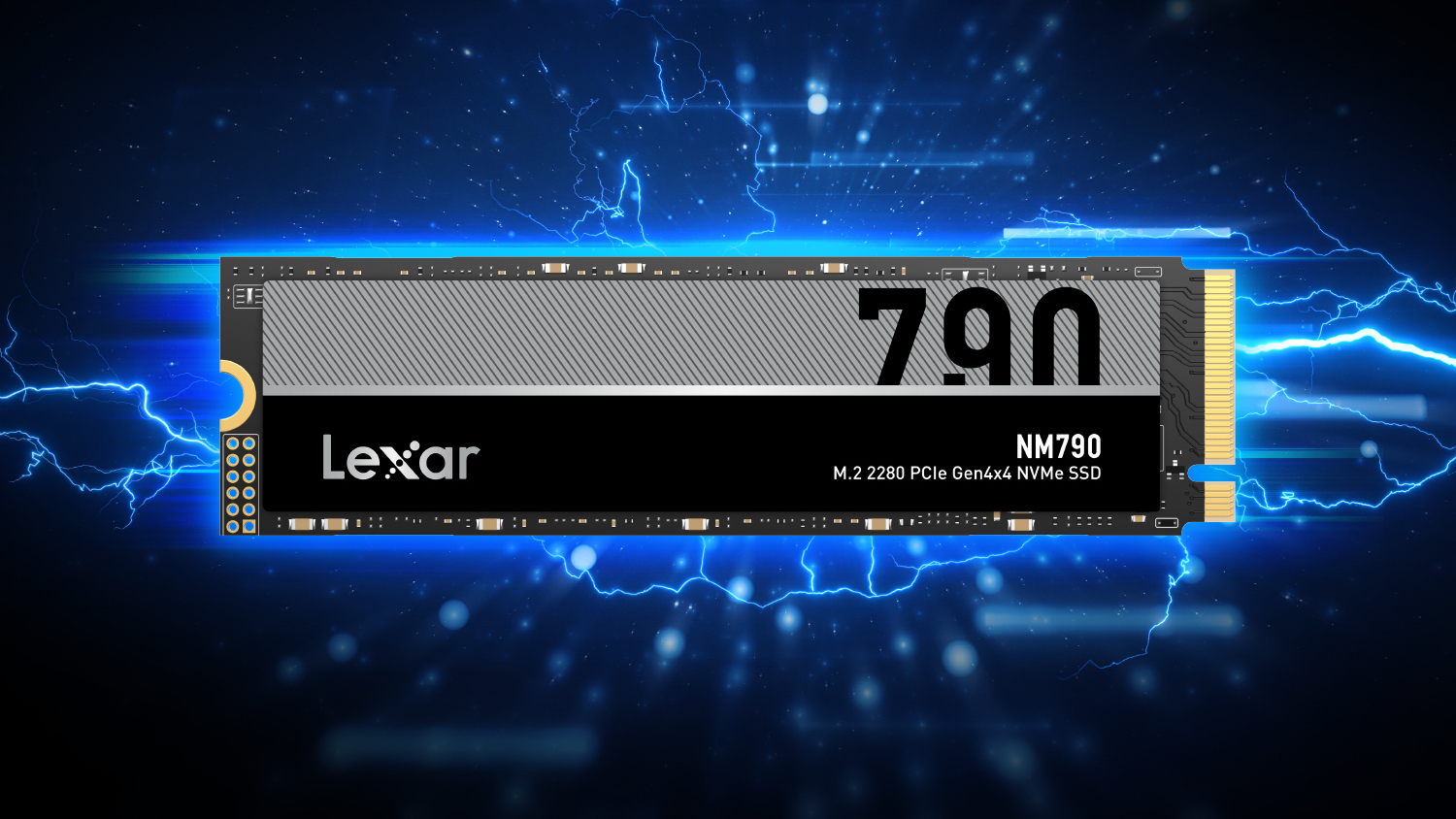
4. Lexar NM790
Our expert review:
Specifications
Reasons to buy
Reasons to avoid
The NM790 is one of the most interesting NVMe SSDs going. It’s priced roughly 50 per cent lower than competing PCIe 4.0 SSDs, while still advertising excellent performance, with respectable 7,400 MB/s read and 6,500 MB/s write sequential speeds, as well as random 4K read speeds of up to one million IOPS. These are decent figures that are almost as good as top-end PCIe 4.0 drives that cost a lot more.
But since the NM790 is so much more affordable, that means you can pick up a 4TB model on Amazon for around £240, a figure in the region of what some brands were recently charging for 2TB. That’s a bargain, especially considering SSD prices have been slightly rising in 2024.
What’s the catch? Well, there’s one major difference between the NM790 and some other NVMe SSDs: it lacks onboard DRAM cache. Instead it uses HMB 3.0 (host memory buffer) technology to use a tiny portion of your workstation’s system memory in place of that on-board DRAM. The lack of DRAM means a lower overall power consumption, which provides notable benefi ts in some systems.
Powered by a Maxiotech MAP1602A controller, the NM790 still uses triple-level cell (TLC) flash with a small single-level cell (SLC) cache, rather than cutting costs any further by reverting to the considerably slower quadlevel cell (QLC) NAND type. For this reason it performed excellently in most tests, and can be considered on par with other PCIe 4.0 SSDs available. In fact, we had to look hard to see any real differences, despite the lower pricing.
The measured IOPS and sequential transfer speeds aren’t up there with drives like Samsung’s 990 Pro, but they still met Lexar’s claims in all our tests. PCMark 10 scores, including latency, matched or even beat the competition. Only in AS SSD did the NM790 slightly fall down, getting the lowest score of any SSD tested.
We can live with that one result. If you want to fill all the M.2 slots on your motherboard with as many high performing NVMe SSDs as possible, the NM790 is undoubtedly the most affordable way to do it.
Best for long-term use
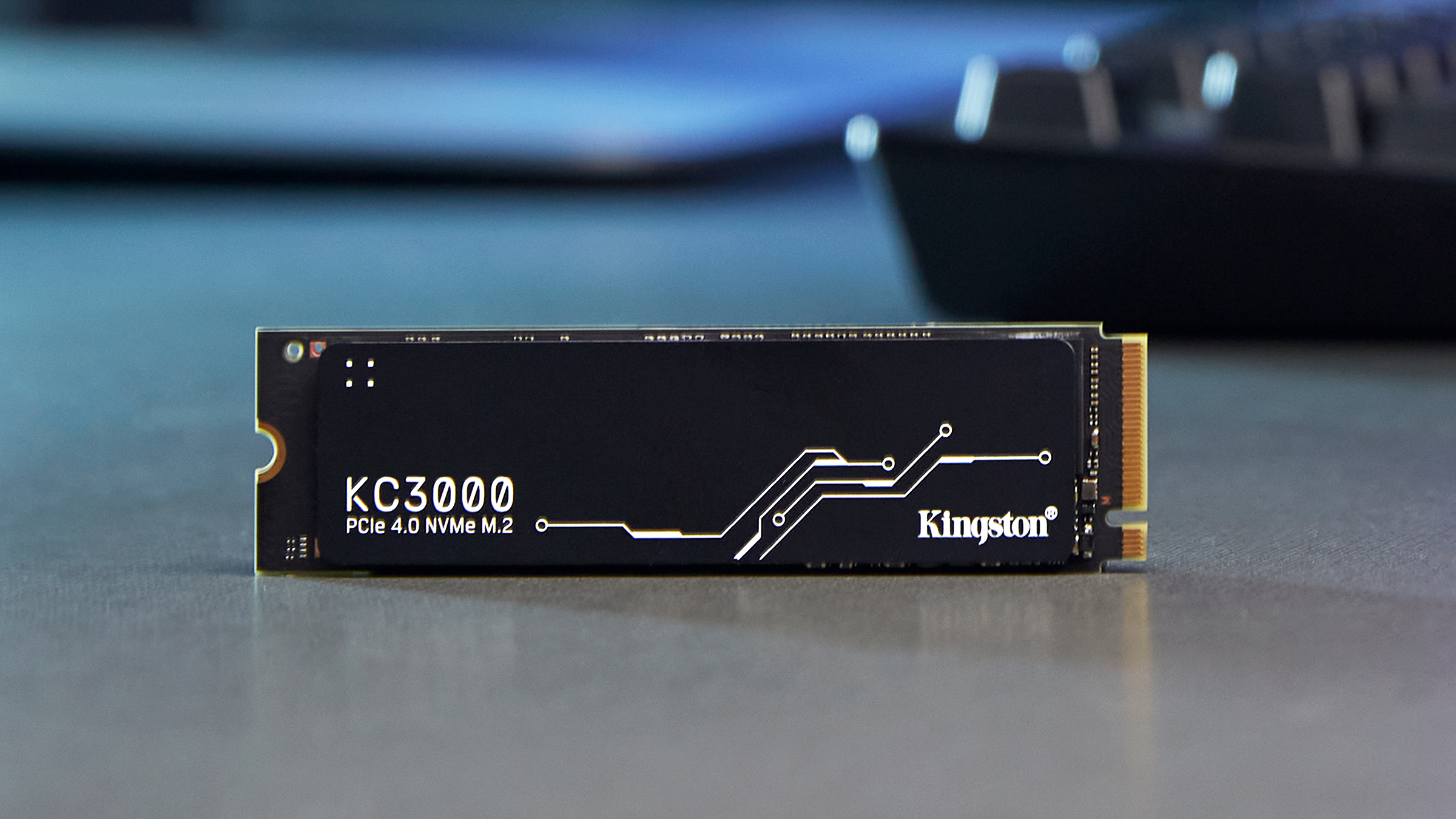
5. Kingston KC3000
Our expert review:
Specifications
Reasons to buy
Reasons to avoid
Kingston was one of the first vendors to launch a PCIe 4.0 NVMe SSD back in 2021, and in the absence of a PCIe 5.0 offering, the KC3000 remains its best-performing, flagship consumer NVMe SSD.
Offering an advertised performance up to 7,000 MB/s sequential read and write speeds along with one million IOPS, it remains up there with the best PCIe 4.0 SSDs on the market three years later. Under the hood, the KC3000 is powered by the Phison E18 controller, comes with 1GB of DRAM cache, and uses 3D TLC NAND flash, with NAND chips on both sides covered by a graphene heat spreader to help it maintain a low average temperature in use.
The KC3000 has a rated endurance of 0.4 DWPD (drive writes per day) or 3,200 TBW for the 4TB model. Notably, this endurance is considerably higher than other competing NVMe SSDs are typically rated for. It’s backed up with a five-year warranty and 2,000,000 hours MTBF (mean time between failures).
When it first launched, the KC3000 was one of the top performing SSDs on the market. Now though, it’s faced with some serious competition. In our tests the 4TB KC3000 exactly met Kingston’s stated 7,000 MB/s sequential read and write speeds, which is an excellent result. And in our IOPS tests, the KC3000 beat the advertised figures, since we measured almost 1.5 million random 4K write IOPS, a figure that indicates fast transfer of small files. Likewise, the KC3000 also scored well in the AS SSD benchmark, beating other PCIe 4.0 NVMe SSDs.
However it’s wasn’t all good news for Kingston. The KC3000 got the highest latency score in PCMark 10 at 45ms, a figure that’s outpaced by SSDs with more modern controllers.
Nevertheless, considering the KC3000 can now be found at extremely reasonable prices online, and given its excellent endurance, it still remains a compelling choice.
Best software
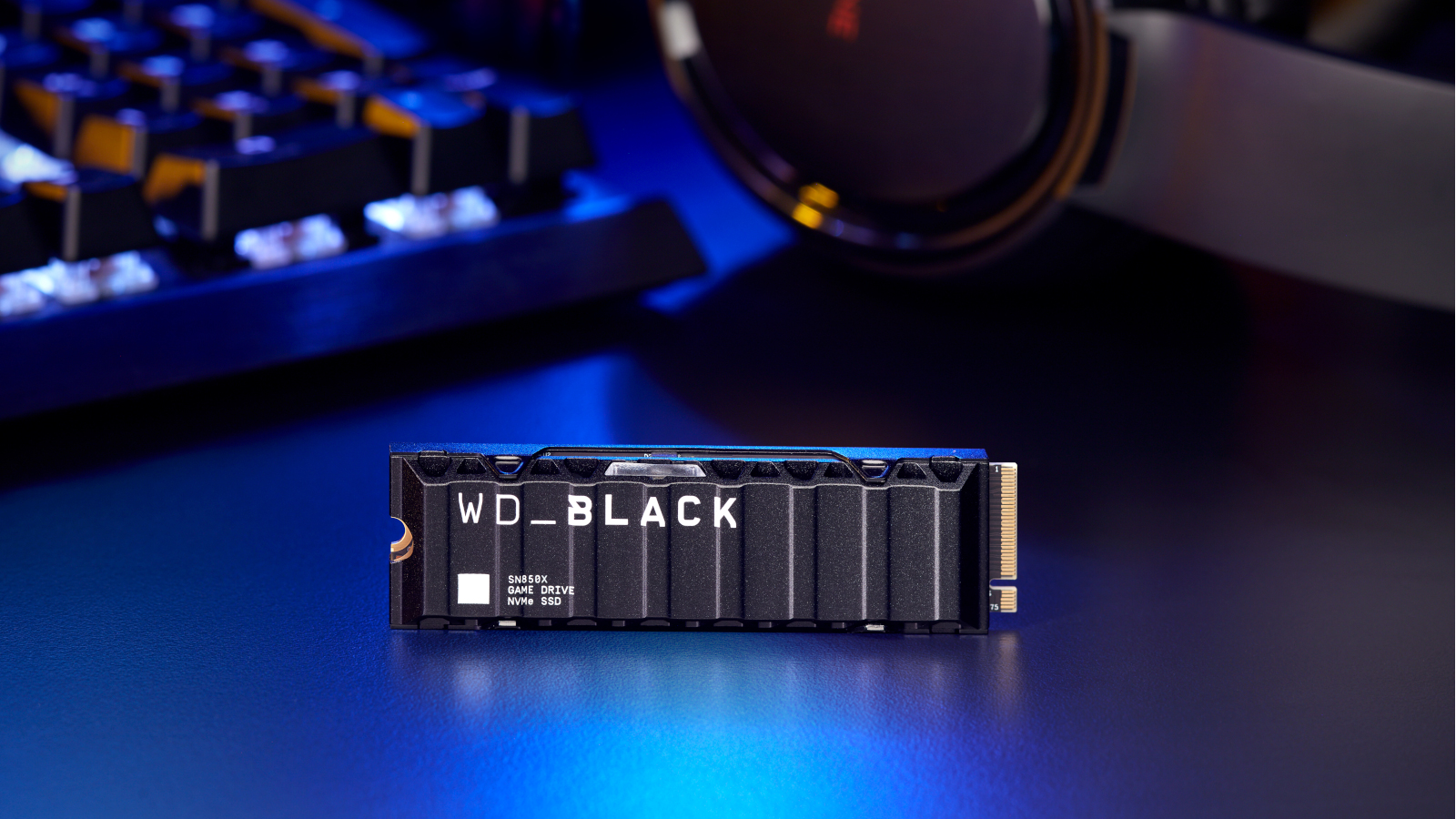
6. WD_Black SN850X
Our expert review:
Specifications
Reasons to buy
Reasons to avoid
Western Digital is perhaps the world’s most diverse storage brand, occupying a leading position in both SSDs and hard drives. With the SanDisk name under its belt too, Western Digital has hedged its bets on the future by investing in both storage formats, along with NAS, DAS, cloud, surveillance, memory cards and more.
Its clever range of coloured product names are instantly recognisable too. Different colours symbolise different use cases, with Red, Blue, Green and Black highlighting tweaked specifications to prioritise particular storage workloads. For example, its Red drives are for NAS units, while Black means high performance. The WD_Black SN850X is by far the fastest consumer NVMe SSD the company currently sells.
It’s built from Kioxia TLC NAND and WD’s in-house controller. Extras are a neat WD management software dashboard that shows drive health and other low-level information. And if you choose it, there’s also a particularly neat, chunky-looking heatsink, naturally in black.
Rated for 7,300 MB/s read and 6,300 MB/s write speeds, and with its higher-capacity models hitting 1.2 million IOPS, the specifications all check out for fast storage performance.
Having said that, the quoted endurance is rated a little on the low side, with just 2,400 TBW for the 4TB model, the same as the Samsung 990 Pro but lower than Kingston’s KC3000 or Lexar’s NM790 are quoting for the same capacity.
In our tests the performance figures mostly checked out. Sequential read performance of 6,962 MB/s was just a little under the quoted speeds. The 800,000 read IOPS was accurate for the 1TB model we tested, with higher capacities offering more. Meanwhile, the write performance was bang on across both tests. With 41ms latency placing the SN850X in the middle of the PCIe 4.0 pack, this is an SSD that hits all the right notes.
Best cheap PCIe 5.0
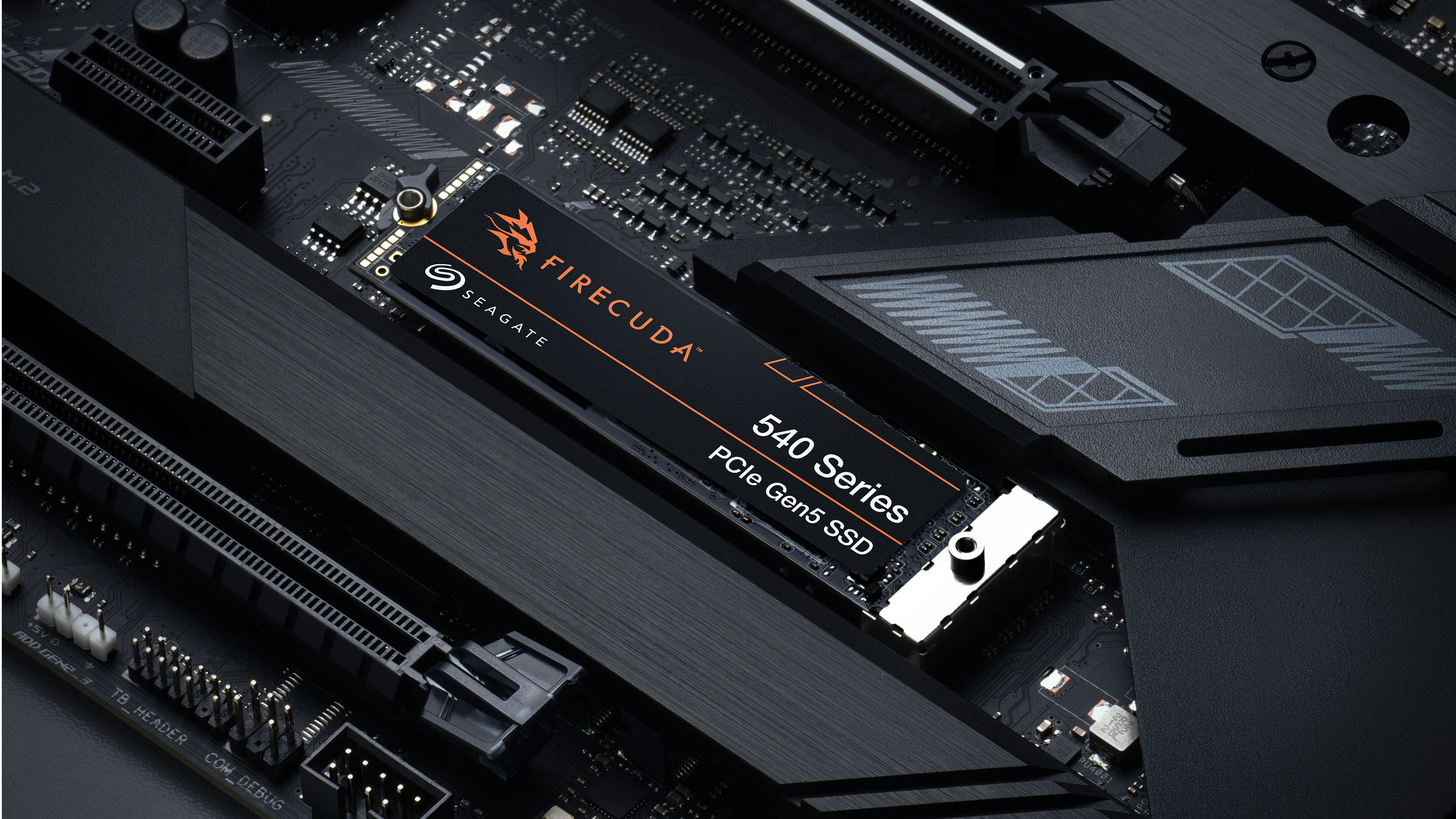
7. Seagate FireCuda 540
Our expert review:
Specifications
Reasons to buy
Reasons to avoid
In 2023, Seagate was one of the first companies out of the door with a PCIe 5.0 SSD. The FireCuda 540, based on the Phison PS5026-E26 controller, wowed the storage world by surpassing PCIe 4.0 and leaving it in the dust.
But jump ahead to 2024 and the performance it offers now looks a little low in comparison to the newer Crucial T705 and Corsair MP700 Pro SSDs, which stretch the PCIe 5.0 standard closer to its limits.
The FireCuda 540 has a similar specification to other PCIe 5.0 SSDs. It can be found in 1TB and 2TB variants, as it seems a 4TB model has not hit the shelves. With 232-layer Micron NAND flash, the 2TB models offers a respectable 2,000 TBW endurance.
With performance that’s not to be sniffed at, the FireCuda 540 is a great storage device overall. In our testing we measured 10,077 MB/s read and 10,195 MB/s write speeds, with 1.5 million read IOPS, 30ms latency, and scores that beat every PCIe 4.0 SSD we tested across the board.
That said, these results are indeed about 40 per cent lower than the speeds that we measured from the newer PCIe 5.0 SSDs of Crucial and Corsair. Given that Seagate’s pricing almost matches their 1TB and 2TB models, that makes the FireCuda 540 poor value for money. If you’re spending extra cash to get the fastestperformance storage there is, you want the best available.
While the FireCuda 540 is a brilliant SSD in all respects, the lower performance prevents us from making it our top recommendation. Hopefully Seagate will come up with an updated model that puts it back at the front of the SSD arms race again.
FAQs
What's the best cooling system for workstation SSDs?
As we found out in our testing, overheating can seriously affect NVMe SSDs, particularly with the PCIe 5.0 drives, which we saw hitting temperatures as high as 85C. By that point, thermal throttling kicks in, significantly reducing the SSD’s performance, and consistently extreme temperatures may not be healthy for it.
You’re definitely going to need some form of passive or active cooling for your SSD in a high-end rig. Whether you pay out for an NVMe SSD with an integrated heatsink, rely on your motherboard’s supplied heat shield or invest in a third-party solution, NVMe SSD cooling should now be considered essential, rather than optional.
How to choose the best SSDs for workstations
PCIe 5.0 is the next step in super-fast SSD performance, and our test results have shown it offering a combination of faster sequential performance, faster IOPS, and lower latencies than any PCIe 4.0 SSD is capable of. It’s no exaggeration that for the fastest workstation storage performance, you’ll want to opt for a PCIe 5.0 SSD model.
Whether or not you should will depend on your budget and individual use case. Where money is no object, PCIe 5.0 is a nobrainer. However, given the thermal headaches we ran into and the high cost, we’d be happy to leave PCIe 5.0 out of our workstation for the time being, and instead put the extra cash into a GPU upgrade, or more system memory and better overall rendering times.
It’s been hard for us to pick winners here because NVMe storage is simply so fast. Even the Lexar NM790, which costs a third of the high-end 4TB PCIe 4.0 drives, performed brilliantly. With Kingston’s KC3000 offering top-of-the-line endurance and Samsung’s 990 Pro outperforming other PCIe 4.0 drives, sticking with the older standard doesn’t feel like an unattractive option.
We have no doubt that PCIe 5.0 is the future for SSDs, but right now it’s still bleeding-edge storage technology that in many ways isn’t ready for mainstream use. Prices are sure to come down in the future, support will go up across motherboard vendors, and hopefully those pesky temperatures will come down too. Until that time arrives, you may be better off waiting to add it to your workstation.
How we test SSDs
For our testing we’ve used popular benchmarking tools like CrystalDiskMark, as well as PCMark to get a more real-world measurement. We’re looking at each SSD’s technical specifications closely, including its longevity, measured in TBW (terabytes written over its lifespan), and details such as each drive’s controller and the NAND flash it uses.
We’re testing the SSDs in a beefy modern workstation with an Intel Core i9-14900K CPU, 96GB worth of Kingston KF560C32RSAK2-96 DDR5 memory, and an Nvidia RTX 4080 Super graphics card. As you can imagine, that high-end specification generates a lot of heat, and although we’re cooling the components with fantastic Noctua NF-A12x25 PWM fans, things can still get exceedingly warm during long rendering sessions.
Daily design news, reviews, how-tos and more, as picked by the editors.

A writer and editor dedicated to helping audiences achieve more with technology, Orestis is a veteran from the days of the 8-bit ZX Spectrum. He is always interested in the fastest, slickest way to make computers do new and exciting things.
- Jon StapleyFreelance writer
